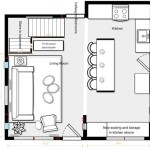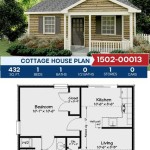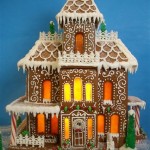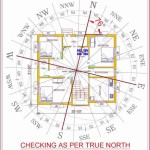Sears Bungalow House Plans: A Journey Through History and Charm
In the early 20th century, Sears, Roebuck, and Company, a renowned American retailer, ventured into the realm of home design, leaving an indelible mark on American architecture. Sears Bungalow House Plans, also known as kit homes or mail-order homes, became a symbol of affordability, convenience, and cherished memories for homeowners across the nation. ### The Rise of Sears Bungalow House Plans The popularity of Sears Bungalow House Plans soared during the early 1900s, coinciding with the rise of the Arts and Crafts movement. These homes embodied the movement's principles of simplicity, functionality, and harmonious integration with nature. Sears capitalized on this growing demand by offering a wide range of bungalow house plans, catering to various tastes and budgets. ### The Allure of Sears Bungalow Homes Sears Bungalow House Plans captivated homeowners with their charming designs, practical layouts, and cost-effectiveness. These homes often featured cozy front porches, inviting living rooms with fireplaces, and efficient kitchens. The bungalow style, characterized by its low-pitched roof, dormer windows, and expansive porches, exuded a sense of warmth and comfort. ### The Convenience of Kit Homes Sears Bungalow House Plans were not just aesthetically pleasing; they were also remarkably convenient. Customers could browse through a catalog of house plans, select their preferred design, and place an order through the mail. Sears would then ship all the necessary materials, including lumber, hardware, and even paint, directly to the building site. This innovative approach revolutionized the home construction process, making it more accessible and less time-consuming. ### The Sears Modern Homes Catalog Sears Bungalow House Plans were featured in the iconic Sears Modern Homes catalog, which served as a source of inspiration for homeowners and builders alike. The catalog showcased a diverse collection of house plans, ranging from modest bungalows to spacious Craftsman-style homes. Each plan included detailed specifications, floor plans, and material lists, empowering individuals to embark on their homebuilding journey with confidence. ### The Legacy of Sears Bungalow Homes Today, Sears Bungalow House Plans continue to captivate homeowners and architects for their timeless appeal and historical significance. Many of these homes have been lovingly preserved and restored, embodying the spirit of craftsmanship and community that defined the early 20th century. Sears Bungalow Homes have become a testament to the enduring power of good design and the enduring legacy of Sears, Roebuck, and Company. ### Conclusion Sears Bungalow House Plans hold a special place in American history, representing an era of innovation, affordability, and architectural charm. These homes continue to be admired for their enduring beauty, practicality, and the sense of nostalgia they evoke. Whether you're an architecture enthusiast, a history buff, or simply someone who appreciates classic design, exploring Sears Bungalow House Plans is a journey worth taking.
Sears Bandon Craftsman Style Bungalow 1923 Kit Houses

Craftsman Cottage 1923 Kilbourne Kit Home Sears Honor Bilt Modern Homes Bungalow Cr House Plans Bungalows

1936 Winona Kit Home Sears Roebuck 20th Century American Residential Architecture Small Bu Vintage House Plans Bungalow Craftsman

Sears Roebuck Bungalow House Plan Modern Home No 264b208 Hipped Roof Craftsman Style

Sears Craftsman Style House Modern Home 264b240 The Corona 1916 Bungalow Plan

1923 Sears Modern Home Kit House Sunbeam Craftsman Bungalow With Colonial Reviva Plans Vintage

Sears Modern Homes House Kits From Catalogs Hooked On Houses

Vintage Small House Plans 1923 Sears Brookside Craftsman Style Bungalow Kit

But Bungalows Go On Forever The Preservation Society Of Asheville Buncombe County

The House That Sears Built Manitowoc County Historical Society








